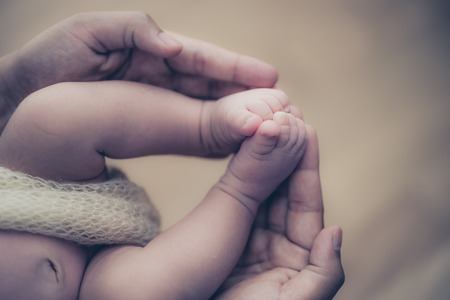1. Introduction to Fingertip Characteristics in Indian Tradition
In the vast tapestry of Indian culture, the study of fingertip characteristics—ranging from unique fingerprint patterns to subtle skin textures—holds a special place in traditional beliefs. For centuries, Indian families and spiritual guides have looked beyond mere appearances, believing that every child is born with distinct signs on their fingertips that may hint at their future path. These physical markers are more than just biological identifiers; they are viewed as symbols carrying divine messages about a childs destiny and the blessings bestowed upon them by the universe. In many households across India, elders observe these fingertip features soon after birth, interpreting whorls, loops, and arches as potential indicators of intellect, temperament, and fortune. Such practices are deeply rooted in an intermingling of ancient palmistry, astrology, and cultural rituals, reflecting a broader worldview where the body is seen as a canvas for cosmic intention. Exploring these traditions offers us a window into how Indian society perceives individuality—not just through nurture or environment, but through innate physical traits believed to connect each child to a greater spiritual legacy.
2. Cultural Significance of Child Blessings
In Indian culture, the act of blessing children, commonly referred to as ‘ashirwad’, holds a special place in family traditions and daily life. Rooted deeply in spiritual beliefs and values, these blessings are not just ritualistic gestures but are seen as powerful tools that influence a child’s destiny, growth, and character. In every Indian household, elders bestow ashirwad upon young ones during significant milestones such as birthdays, festivals like Diwali or Raksha Bandhan, academic achievements, or even before embarking on new journeys.
Understanding the cultural importance of these blessings requires appreciating how they are woven into the fabric of daily interactions. A simple touch on the head, a gentle pat on the back, or a whispered prayer can serve as a medium through which positive intentions are passed from one generation to another. These acts instil confidence, a sense of security, and belonging in children, shaping their emotional and psychological well-being. It is believed that ashirwad carries the collective wisdom and good wishes of ancestors and elders, empowering children to overcome obstacles and flourish.
To highlight how Indian families cherish child blessings and their broader impact on upbringing, let’s look at some common practices:
Blessing Occasion |
Common Rituals |
Intended Impact |
|---|---|---|
| Birthdays | Touching feet of elders; receiving gifts & prayers | Instilling humility and gratitude |
| Festivals | Tilak application; sharing sweets; reciting mantras | Nurturing cultural identity and familial bonds |
| Academic Milestones | Blessings before exams; offering prasad | Boosting confidence and focus |
| Lifelong Events (marriage, first job) | Sacred rituals; symbolic gifts from elders | Guidance for new beginnings and responsibilities |
The emotional resonance of receiving ashirwad stays with a child long after the moment has passed. For many Indians, these blessings are an anchor—a source of strength they return to during challenging times. They remind us that each child’s journey is not walked alone but is supported by the love, hopes, and aspirations of their family and community. Thus, understanding ashirwad within Indian society reveals its profound role in nurturing resilience, shaping values, and guiding personal growth.
![]()
3. Interpretation of Fingertip Patterns—Insights from Palmistry
In Indian culture, the art of palmistry—known locally as hast rekha shastra—holds a sacred place, especially when it comes to interpreting the signs found on a child’s fingertips. This ancient practice goes far beyond mere curiosity; it is rooted in a deep belief that the patterns on one’s fingers can reveal destiny, health, and even the blessings that a child may carry throughout life. Indian palmists pay close attention to the shape, ridges, and unique prints present on each fingertip, seeing them as divine blueprints that offer guidance and insight.
Fingertip Shapes and Their Meanings
The shape of a childs fingertips—whether round, square, pointed, or spatulate—is often the first aspect examined by an experienced palmist. In Indian tradition:
- Round tips are associated with gentle temperament and adaptability. Such children are believed to be easy-going and blessed with harmonious relationships.
- Square tips point toward practicality, discipline, and a strong sense of justice—qualities highly valued in Indian families hoping for responsible and stable offspring.
- Pointed tips, though less common, indicate creativity and spiritual inclination, often seen as a sign of future wisdom or artistic talent—a true blessing in many Indian households.
The Significance of Finger Ridges
Beyond shape, the pattern of ridges—be they loops, whorls, or arches—holds particular significance in Indian palmistry. Loops are thought to bring luck and sociability; whorls symbolize individuality and leadership qualities; arches suggest patience and persistence. Families frequently consult astrologers or palmists during early childhood rituals such as Namakaran (naming ceremony) or Annaprashan (first solid food), seeking reassurance about their child’s future through these tiny yet telling details.
Fingertip Prints: Health and Destiny
The unique prints on each fingertip are not just markers of identity but also considered windows into a child’s physical well-being and fortune. In Ayurveda-inspired interpretations, certain print types may indicate robustness or susceptibility to specific ailments. A whorl on the thumb is often interpreted as a sign of strong willpower—a desirable trait for overcoming obstacles in life. Thus, through generations, Indian parents have looked to these minute characteristics to seek blessings for their children’s health, happiness, and prosperity.
4. Fingertip Characteristics in Everyday Indian Rituals
Across the diverse landscape of India, rituals and ceremonies involving children are deeply rooted in tradition, symbolism, and cultural values. One fascinating aspect is the use of fingertip characteristics—such as shape, texture, and lines—during these sacred moments. This section explores how such traits are observed, interpreted, and honored in everyday Indian practices, especially during naming ceremonies (Namkaran), festivals, and other rites that bestow blessings upon children.
Fingertip Symbolism in Naming Ceremonies
In many Indian families, the Namkaran ceremony is a cherished occasion where an infant receives their official name. It is not uncommon for elders or priests to examine the childs fingertips during this ritual. The patterns and lines on each finger are believed to reveal aspects of the childs destiny, temperament, and potential. Sometimes, the choice of a childs name may even be influenced by the dominant characteristics found on their fingertips, aligning them with auspicious sounds or deities according to astrological beliefs.
Role During Festivals and Blessing Rituals
During major festivals like Diwali, Holi, or Raksha Bandhan, it is traditional for family members to apply tilak (a ceremonial mark) to childrens foreheads using their fingertips. The act itself holds deep significance—the right-hand index or ring finger is often chosen based on its spiritual association. In some regions, elders will first touch a child’s fingertips before blessing them, symbolizing the transfer of positive energy and good fortune through the unique patterns present on those tiny fingers.
Common Fingertip Practices Across Key Child Blessing Rituals
| Ritual | Fingertip Involvement | Cultural Significance |
|---|---|---|
| Naming Ceremony (Namkaran) | Examination of fingertip lines & shapes by elders/priests | Guidance for auspicious naming; predictions about life path |
| Festivals (Diwali/Holi/Raksha Bandhan) | Application of tilak/blessings using specific fingers | Invoking divine protection & transferring blessings |
| Annaprashan (First Rice-Eating) | Feeding child using elder’s fingertips | Symbolic nurturing & passing down family virtues |
| Blessing Ceremonies after Illness/Challenges | Laying hands/fingers on child’s head or palm | Cleansing negative energies & offering healing prayers |
Cultural Nuances in Regional Practices
The interpretation of fingertip characteristics can vary widely across India’s regions and communities. In South Indian traditions, for example, there is heightened emphasis on the whorls and loops found on a baby’s fingertips when predicting intellectual prowess or artistic ability. Meanwhile, North Indian rituals might focus more on which finger delivers the blessing—a detail believed to channel distinct cosmic energies onto the child. Regardless of regional differences, these practices reflect a collective belief in the power of touch and physical symbols to shape a child’s future.
5. Community Perspectives and Regional Beliefs
India’s vast cultural tapestry is woven with regional traditions and diverse community beliefs, especially when it comes to interpreting fingertip characteristics in relation to child blessings. Across the country, each region and community adds its own nuanced understanding and rituals connected to the lines, shapes, and patterns found on a childs fingertips.
Unique Traditions Across States
For instance, in Tamil Nadu, elders often examine the whorls and loops on a newborn’s fingers during naming ceremonies (Namkaran), believing that certain patterns signify an auspicious destiny or special protection from family deities. In contrast, communities in Gujarat may associate particular fingertip traits with intelligence, prosperity, or even musical talent, weaving these interpretations into everyday blessings offered by grandparents and spiritual leaders.
Community Interpretations of Blessings
Among Bengali families, it is common for mothers-in-law to gently press a child’s fingertips while whispering prayers for health and wisdom. The interpretation of fingertip signs—such as conch shell patterns or rare arches—often becomes a cherished part of personal stories and family folklore. In Rajasthan, where palmistry has deep roots, fingertip patterns are consulted before major life events, with blessings tailored according to the perceived future revealed through these subtle markers.
The Role of Faith Leaders and Healers
Local pandits and traditional healers (hakims) play a vital role in sustaining these beliefs across generations. Their guidance often blends Vedic wisdom with folk practices, ensuring that fingertip readings are not merely superstitions but integral aspects of community celebrations like Annaprashan (first rice eating ceremony) or Mundan (head shaving ritual). These moments become opportunities for collective blessing, where the uniqueness of a child’s fingertips is seen as both gift and guiding sign.
Cultural Continuity Through Rituals
The beauty of Indian culture lies in how these beliefs are lovingly preserved and adapted by each new generation. Whether in urban apartments or rural villages, families continue to honour their regional customs, making fingertip characteristics a meaningful bridge between ancient wisdom and modern aspirations for children’s well-being. Thus, the impact of fingertip traits on child blessings remains not only a matter of individual fate but also a testament to the rich diversity of India’s spiritual heritage.
6. Modern Viewpoints: Balancing Tradition and Science
In today’s rapidly evolving Indian society, the approach to child blessings and the interpretation of fingertip characteristics is experiencing a significant transformation. While traditional beliefs about the lines, patterns, and shapes on children’s fingertips have long been intertwined with auspicious rituals, many urban families are now integrating scientific perspectives into their understanding. The younger generation, particularly in metropolitan areas like Mumbai, Bengaluru, and Delhi, often seeks a balance between cultural customs and modern scientific reasoning.
Many parents still consult astrologers or palmists during important milestones—such as naming ceremonies or school admissions—hoping that favorable fingertip traits will bring their children good fortune. These rituals remain a source of comfort and identity for countless Indian families. However, alongside these traditions, there is growing awareness about genetics and early childhood development. With increased access to education and digital resources, parents are more informed about how inherited genetic factors—not just spiritual interpretations—contribute to a child’s abilities and health.
Schools and pediatricians across India now encourage parents to appreciate every child’s uniqueness beyond traditional markings. Scientific workshops and online parenting forums discuss how environmental influences, nutrition, and emotional support play a crucial role in shaping a child’s future—sometimes outweighing any predetermined destiny suggested by fingertip analysis. This shift reflects India’s broader journey towards harmonizing its rich heritage with evidence-based practices.
Even so, respect for tradition continues to thrive. Many Indian households choose to celebrate both perspectives: performing customary blessings while also encouraging curiosity about biology and psychology. This duality fosters an environment where children grow up rooted in their culture yet equipped with a modern mindset—embodying resilience, adaptability, and self-awareness.
Ultimately, the coexistence of tradition and science offers Indian families a holistic approach to nurturing their children. By honoring rituals related to fingertip characteristics while embracing advancements in genetics and developmental science, contemporary Indian society demonstrates how age-old wisdom can harmoniously blend with progressive thought—for the benefit of future generations.


